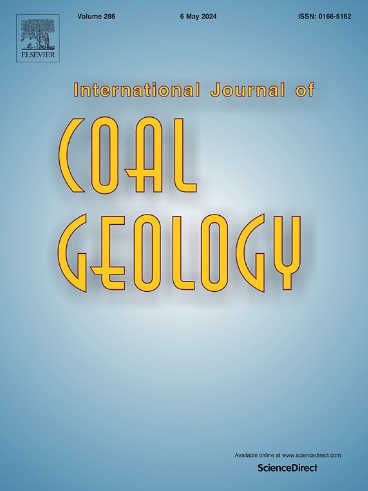丹麦北海始新世-中新世云雀组沉积物来源、流场变化及沉积环境变化的元素地球化学研究
IF 5.6
2区 工程技术
Q2 ENERGY & FUELS
引用次数: 0
摘要
丹麦北海云雀组对于了解始新世晚期至中新世中期气候和构造对沉积物供应和沉积环境的影响具有重要的古环境意义。本研究探讨了这些气候和构造事件与沉积物来源、沉积物通量变化、化学风化强度和氧化还原条件的关系。采用电感耦合等离子体质谱(ICP-MS)和电感耦合等离子体光学发射光谱(ICP-OES)对丹麦北海6口井的86块岩屑和1块岩心数据集进行了分析。最近发表的这些样品的显微成分也包括在本研究中。本文章由计算机程序翻译,如有差异,请以英文原文为准。
Elemental geochemical insights into sediment sources, influx variations and depositional environment changes in the Eocene–Miocene Lark Formation, Danish North Sea
The Lark Formation in the Danish North Sea holds great paleoenvironmental interest for understanding climatic and tectonic impacts on sediment supply and depositional environment during the latest Eocene to the Middle Miocene. This study investigates sediment provenance, variations in sediment flux, chemical weathering intensity, and redox conditions in relation to these climatic and tectonic events. A dataset of 86 cuttings and one core from six wells in the Danish North Sea was analyzed using Inductively Coupled Plasma Mass Spectrometry (ICP-MS) and Inductively Coupled Plasma Optical Emission Spectroscopy (ICP-OES). The recently published maceral composition of these samples was also included in this research.
Provenance investigation indicates that the sediment originated from felsic sources within a continental arc tectonic setting. Such a source area is currently located in southern Norway and Sweden on the southwest margin of the Baltic Shield. During the Eocene–Miocene progressive filling of the eastern North Sea Basin, climatic conditions primarily controlled chemical weathering intensity and sediment influx. This is evidenced by higher Chemical Index of Alteration (CIA) and Zr concentrations in the Lower Miocene compared to other series deposited under cooler and less humid climates. Additionally, elemental proxies (Ceanom, V/(V + Ni), Th/U), along with organic petrological and geochemical evidence, indicate that the Lark Formation was deposited in dysoxic-anoxic environments. Variations of these proxies further reveal that sea-level changes primarily controlled fluctuations in redox condition, resulting in more oxic environments. Moreover, the impact of marine productivity on U and Mo is revealed by the positive correlations between the enrichment factors of U (UEF) and Mo (MoEF) and the abundances of liptinite and Cd. Increased productivity, combined with bottom water anoxia, led to the enrichment of U and Mo in the sediment, with upwelling further enhancing this process.
求助全文
通过发布文献求助,成功后即可免费获取论文全文。
去求助
来源期刊

International Journal of Coal Geology
工程技术-地球科学综合
CiteScore
11.00
自引率
14.30%
发文量
145
审稿时长
38 days
期刊介绍:
The International Journal of Coal Geology deals with fundamental and applied aspects of the geology and petrology of coal, oil/gas source rocks and shale gas resources. The journal aims to advance the exploration, exploitation and utilization of these resources, and to stimulate environmental awareness as well as advancement of engineering for effective resource management.
 求助内容:
求助内容: 应助结果提醒方式:
应助结果提醒方式:


